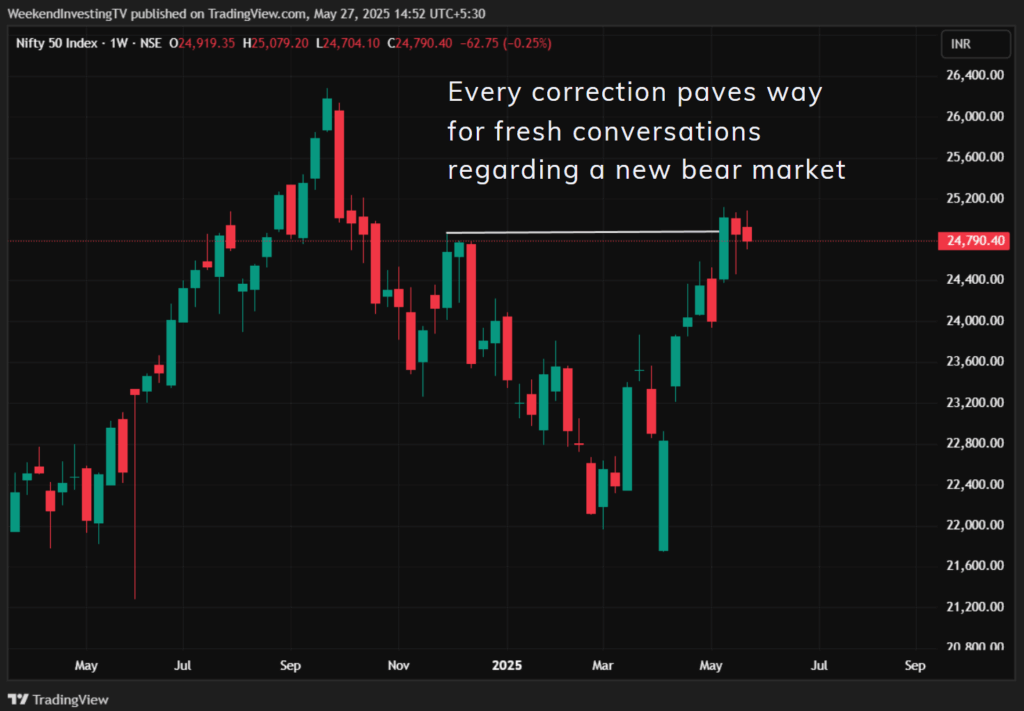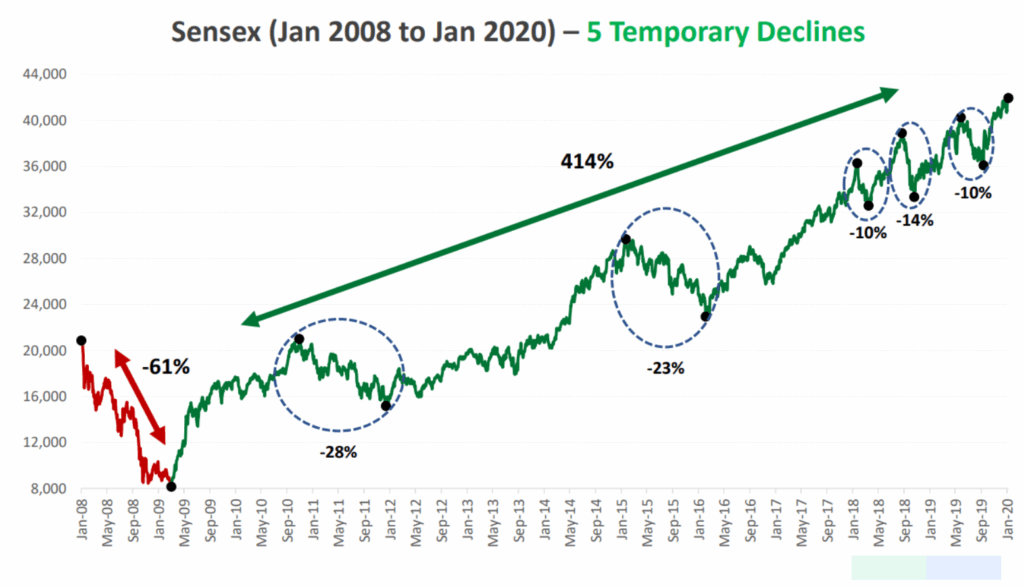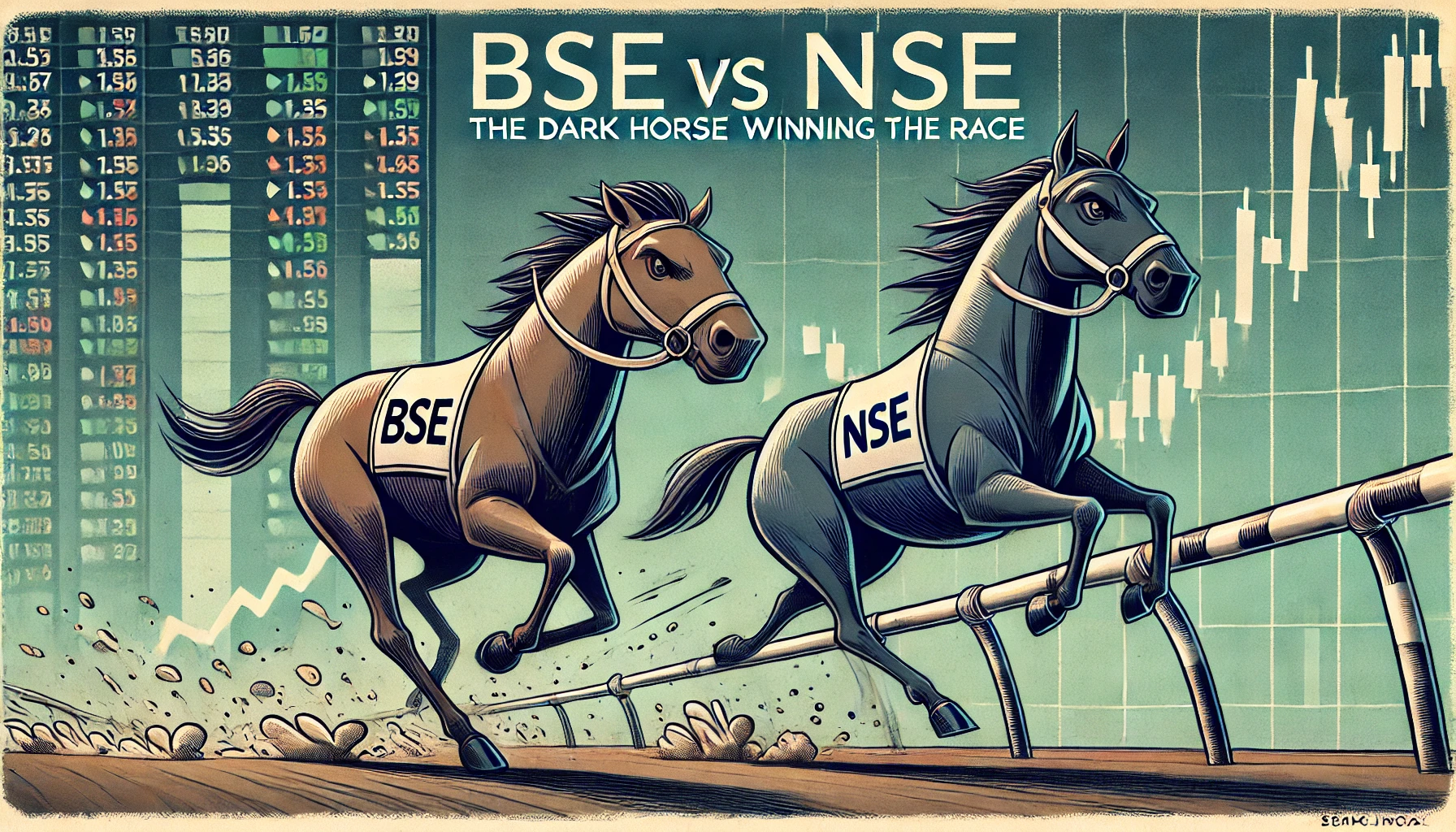
Market Corrections Trigger Fear
Whenever the market begins to correct, discussions about the onset of a new bear market often arise. Investors frequently pause their regular investments—whether through monthly SIPs, lump sums, or other methods—waiting for the ‘right time’ to re-enter the market. However, in many cases, the market quickly rebounds, leaving these investors behind. As they wait for another dip, this cycle of hesitation repeats itself.

What the Data Reveals
If we take a step back and examine the data since 2008, we can see that severe corrections have been relatively rare.

Aside from the exceptional COVID-19 crash, the market experienced corrections of 28% in 2011 and 23% in 2015. Other dips have ranged between 10-14%.
Despite these drawdowns, the market has risen by a staggering 414% during this 15-year period. While investors have focused on these short-term declines, long-term trends have continued to trend upward, quietly rewarding disciplined participants.
Stop Waiting for the Perfect Entry Point
A common concern among investors is the belief that markets are too expensive, often based on metrics like the price-to-earnings (PE) ratio. Consequently, many stay on the sidelines, fearing a crash. Unfortunately, this fear can lead to missed opportunities.
One effective way to manage this fear is to break larger investments into smaller parts. For example, if you plan to invest ₹1,00,000, consider deploying it in tranches of ₹10,000 each. This approach serves two purposes:
- Downside Protection: If the market declines after your first installment, your subsequent investments will average your cost lower.
- Upside Participation: If the market rises, your early investments will start generating returns, boosting your confidence in future allocations.
This staggered method helps create a psychological buffer. As more installments show gains, investors feel reassured and become more willing to continue investing.
Avoid Lump Sum FOMO
Investing a large amount when the market is at a high, driven by FOMO (fear of missing out), often leads to regret and panic when the portfolio turns red. This can damage confidence and lead to reactive decision-making. Staggered investing, on the other hand, cushions the emotional impact and promotes long-term commitment.
Keep the Bigger Picture in Focus
Ultimately, it’s essential to keep a broader perspective. Yes, severe corrections like those in 2008 may occur again in the future, but waiting indefinitely for such rare events means missing out on the steady long-term growth that markets typically provide. Short-term corrections are inevitable, but they shouldn’t derail your long-term vision. Focus on where the market is headed over the years, not just the weeks.
Are short-term corrections causing you to hesitate as well? Share your experiences in the comments below! If you found this blog helpful, please share it with your friends and fellow investors.
WeekendInvesting launches – The Momentum Podcast
Join us on The MOMENTUM PODCAST as we sit down with Venkatesh, a dynamic product manager and MBA graduate from Hyderabad. Discover his incredible journey from starting investing during the 2020 COVID crash to achieving a remarkable 5X salary jump!
In this insightful conversation, Venkatesh shares:
✅ His early investing blunders and crucial lessons learned.
✅ How he built a disciplined investing routine with Nifty index funds and direct stocks like Tata Elxsi.
✅ The surprising benefits of his IT domain knowledge in stock picking.
✅ His long-term vision for financial independence and strategic wealth building.
✅ Why he prioritizes investments and EMIs (including his home loan!) before anything else.
If you’re a young professional looking to kickstart your investment journey or seeking inspiration for disciplined wealth creation, this episode is a must-watch!









